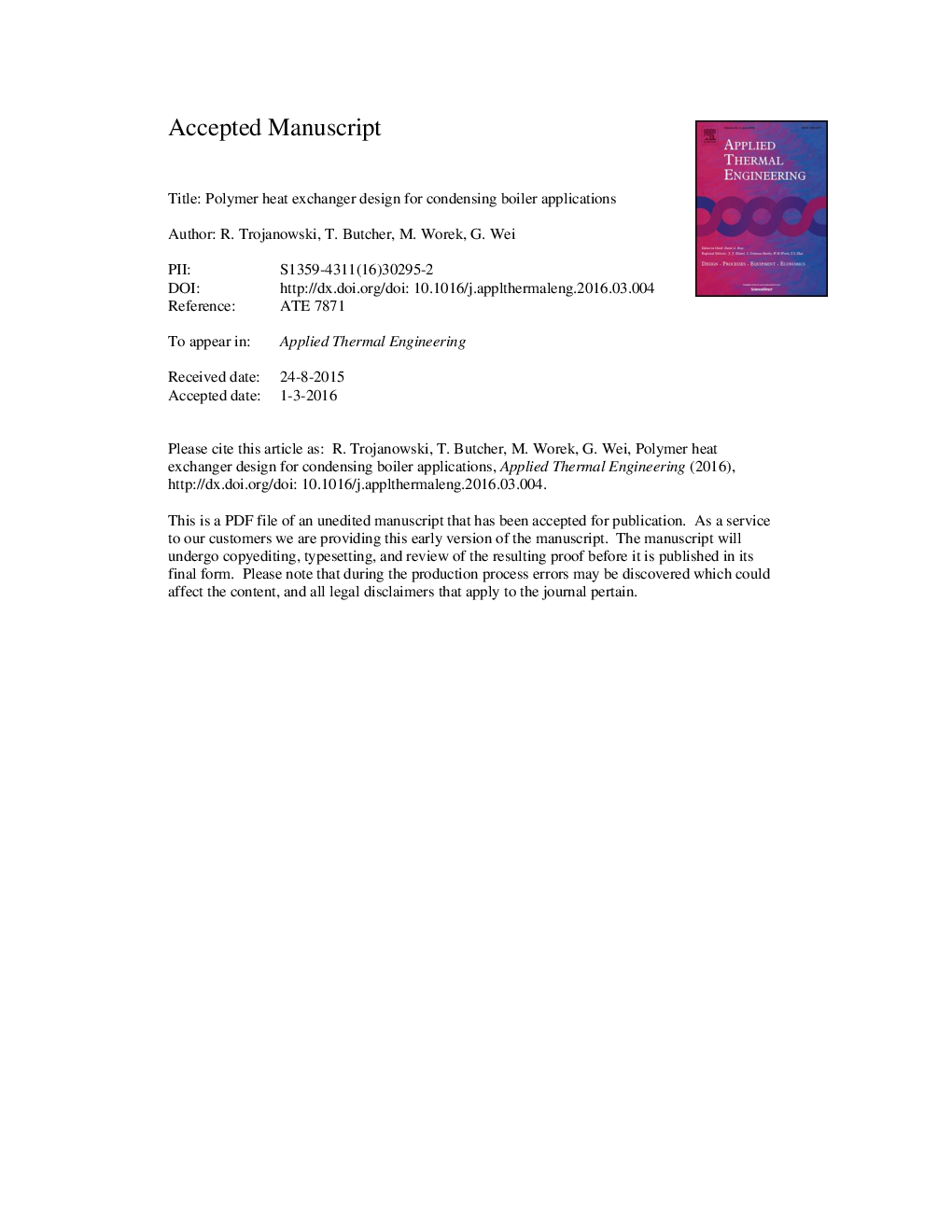| Article ID | Journal | Published Year | Pages | File Type |
|---|---|---|---|---|
| 7047589 | Applied Thermal Engineering | 2016 | 22 Pages |
Abstract
Computational fluid dynamic results indicated thermal conductivity values of stainless steel, a typical heat exchanger material, do not need to be achieved for similar heat transfer performance. An increase in thermal conductivity from about 10 times that of the base polymer can achieve an overall heat exchanger effectiveness similar to that achieved with stainless steel. A polymer composite thermal conductivity of approximately 2.5âW/mâ
K would be adequate. Thermally conductive polymer materials are now commercially available which offer values up to 20âW/mâ
K. In this work, one Nylon-12 and one thermally conductive polymer composite heat exchanger prototypes were constructed for a condensing boiler application. Tests demonstrated that good overall heat transfer performance was achieved. The lower thermal conductivity of the polymer heat exchanger will lead to higher surface temperatures and lower water condensation rates.
Related Topics
Physical Sciences and Engineering
Chemical Engineering
Fluid Flow and Transfer Processes
Authors
R. Trojanowski, T. Butcher, M. Worek, G. Wei,
